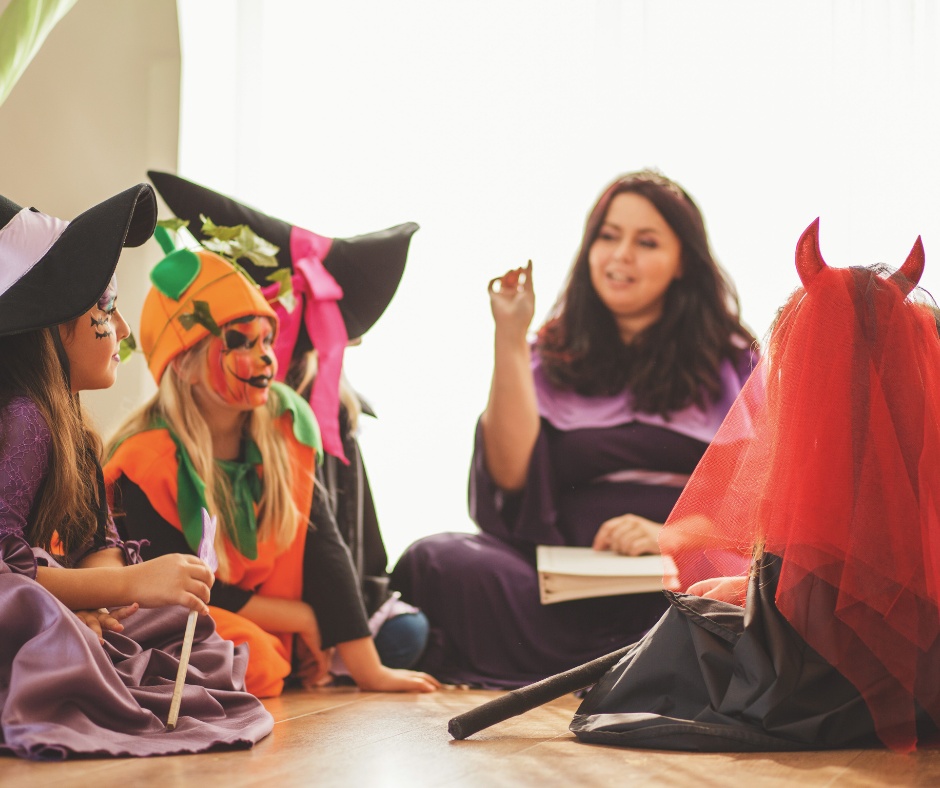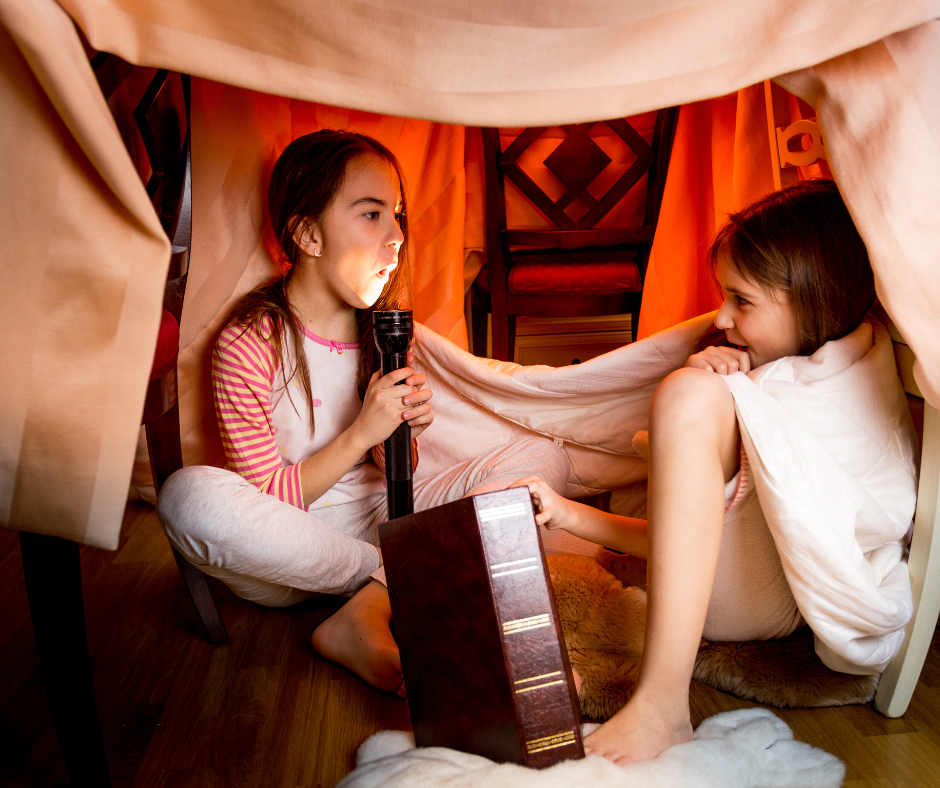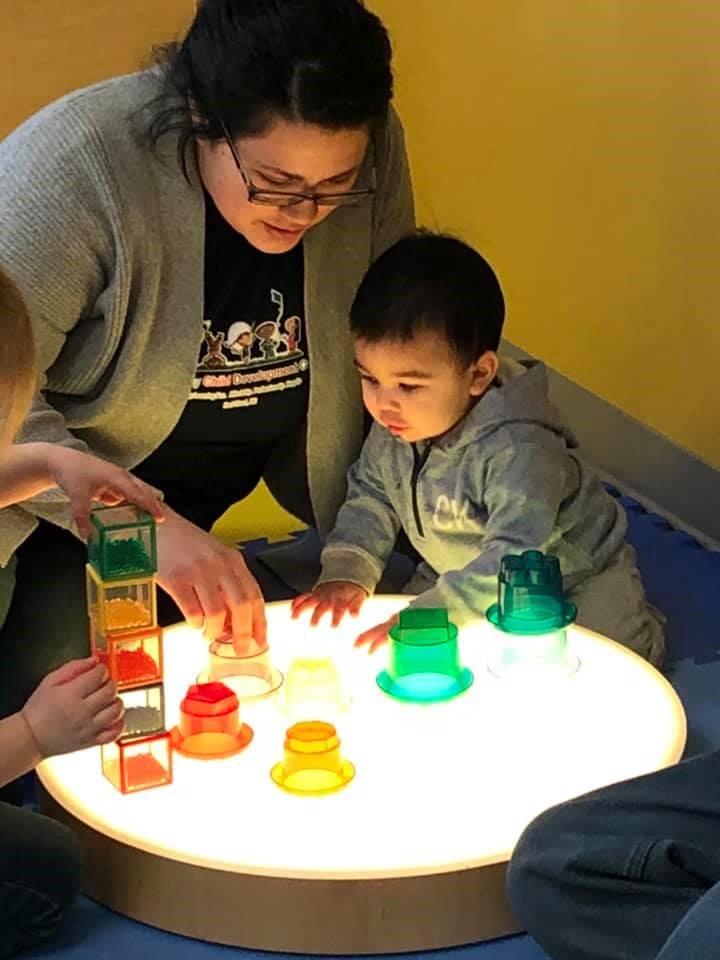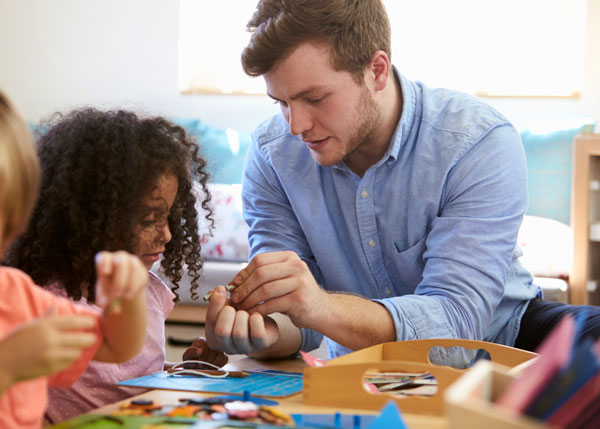
Image Source: Canva
“Tell me a story!” This is an opening to build on your child’s interests and attention span. Pounce on the opportunity by having a few suspenseful stories of your own ready to share! Unlike reading to children, oral storytelling seems to unleash the imagination. (No illustrations to rely on!) When we are making direct eye contact with the children in our audience, we are also building community. When we watch each other’s faces for emotions, a call-and-response takes place. For example, if I gesture wildly or raise my voice, the children gasp. If I whisper, they lean forward. The intense listening and immediate responses create a level of intimacy and unity.
By acting out stories, children consider how characters look, move, and sound. What are the gestures and voices that make the characters seem real? Here are some stories appropriate for children ages three to five, with a few suggestions for sparking interaction.
“Goldilocks and the Three Bears”
When telling this story, pause to let the children act out scenes. When Goldilocks is tasting porridge, children cup their palms as if holding the bowl. Does the bowl feel hot or cold? Next, taste the porridge using various facial expressions. When Goldilocks sit in the rocking chairs, they can rock back and forth. Then Goldilocks startles awake, looking very frightened! The children can run in place to demonstrate Goldilocks fleeing and may begin stomping their feet to show speed and fear.
“Going on a Tiger Hunt”
This story not only has repetitive phrases such as “but I’m not afraid” but also gives children the opportunity to invent many sound effects and memorize/anticipate the rhythm and sequence of the sound effects.
“The Three Billy Goats Gruff”
Before telling this story, discuss with the children how a troll might move or sound. When telling the story, ask the children, “How do you think the eldest Billy Goat Gruff sounds different from Baby Billy Goat Gruff? How do you think the eldest Billy Goat Gruff moves when he crosses the bridge versus Baby Billy Goat Gruff?” This discussion will make each character more distinctive and will also encourage the children to be aware of the differing points of view when acting out each segment. Children will also begin to predict the repetition of phrases such as “trip-trap-trip-trap” when the goats move over the bridge.
Oral storytelling encourages deeper participation among preschoolers through role-playing and performance. Preschoolers develop essential speaking and listening skills when they express their ideas and respond to the ideas of others. Storytelling can expand preschoolers’ creativity and develop their language skills and social skills. If children are learning a new language, tell stories that incorporate a few keywords in their native language.

Image Source: Canva
Dancing with Preschoolers
Have you ever wondered how to get your exercising done while also keeping an eye on your preschooler? You can do both at the same time by teaching dance to the children in your care. Children are natural explorers, and they enjoy activities that involve the senses and movement. As a result, children are more engaged and physical activity makes them feel good! Together we can demonstrate and practice the movements that go with words like tiptoe, gallop, soar, swing, shuffle, sway, prance, and twirl. While teaching, set up a mirror or record the children dancing, so the children can watch themselves during or afterward!
You can also incorporate changes of tempo (speed) and rhythm (marching, waltzing). Choose music that is mostly instrumental and let the children experiment with movements best adapted to the music. Alternate between music that is calm and soothing and music that suggests a very energetic response. Ask children how their bodies felt when listening or moving to the different types of music. Which ones did they like the most?
Activity Ideas for groups of preschoolers
- Read the chosen book aloud to the undivided class. Then, ask the children in the first group to go to a personal space. Remind children to be aware of others in the space around them.
- Split the class into two groups if space is limited. One group will be the audience and the other will dance.
- Ask the children in the audience group to do something specific while they watch the dancers. Watch for actions by the dancers, like ice skating, building a snowman, or making footprints in the snow.
- Play the music softly. Over the music, retell highlights from the story in the order they happened and if necessary, call out movement prompts.
- Observe any variations created by the children as they relive the story through movement. Give children enough time to try out their ideas, but also be ready to move on to the following action before attention wanders.
- Conclude the story and ask the children to freeze in their final position.
- Have the two groups change places and retell the story.
- Then, children can move to a circle to sit and discuss any changes or additions they could make to the story.

Image Source: Canva
Children may have a favorite story that suggests various movements. Encourage them to move by selecting their favorite story to act out. It’ll help them stay engaged with the story!
The Snowy Day by Ezra Jack Keats. 1962. Viking Press.
The book follows the adventures of Peter, a little boy in the city on a very snowy day.
Possible actions include: Waking up, looking around, putting on a snowsuit, walking with toes pointing out and toes pointing in, dragging feet slowly, swinging a stick at a tree, making a snowman and a snow angel, climbing a snow bank and sliding down, putting snowballs in pockets, going to sleep. What other actions can you think of?
Kitten’s First Full Moon by Kevin Henkes. 2004. Greenwillow Books.
This book is about a kitten who thinks the moon is a bowl of milk.
Possible actions include: looking at the moon, closing her eyes, stretching her neck, opening her mouth, tasting a bug, leaping at the moon and falling, hurting her ear, running (in place), climbing a tree, leaping in the pond, feeling wet and hungry, drinking a bowl of soup
Interestingly, when preschoolers retell a story through dance, they build language and literacy skills. Creating dance stories helps preschoolers learn about sequencing, identify with characters, understand the setting, acquire vocabulary, reinforce concepts from the stories, and gain awareness of adapting movement to the available space. Overall, incorporating movements with stories frees a child’s imagination and prompts them to interact with the material. Check out Growing Active Readers for more book-based lessons for children Pre-K to 3rd Grade.
Source: Expressing Creativity in Preschool from the editors of Teaching Young Children. 2015.
National Association for the Education of Young Children.
LADONNA WERTH, EXTENSION EDUCATOR | EARLY CHILDHOOD EXTENSION
Peer Reviewed by Lynn DeVries, Lisa Poppe, and Jackie Steffen, Extension Educator, Early Childhood Extension
Make sure to follow The Learning Child on social media for more research-based early childhood education resources!




 average of seven hours a day on entertainment media, including televisions, computers, phones and other electronic devices. To help kids make wise media choices, parents should develop a Family Media Use Plan for everyone in their family.”
average of seven hours a day on entertainment media, including televisions, computers, phones and other electronic devices. To help kids make wise media choices, parents should develop a Family Media Use Plan for everyone in their family.”















